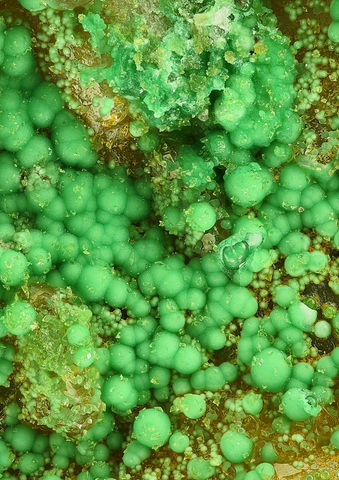BAYLDONITE
Class : Phosphates, arsenates, vanadates
Subclass : Hydrated arsenates
Crystal System : Monoclinic
Chemistry : Cu3Pb(AsO4)2(OH)2
Rarity : Fairly common
Bayldonite is secondary arsenate from the oxidation zones of copper deposits where it associates with many other secondary copper and lead minerals (malachite, azurite, cerussite, adamite, olivenite, etc...). Its name was given to it in honor of the physicist John Bayldon who discovered it at the Penberthy mine in Cornwall. It is rare in crystals, the latter not exceeding one centimeter, and usually forms encrustations and hummocky concretions with a fibrous texture, powdery coatings, mimetite or tennantite pseudomorphs. Bayldonite is yellow-green to grass-green, sometimes dark green.
Main photo : Bayldonite from Clara Mine, Germany © Stephan Wolfsried
Bayldonite in the World
Twinning and special crystallizations
Twins are known with (-311) as composition plane.
Fakes and treatments
No fake or treatment identified for this mineral species.
Hardness : 4.5
Density : 5.2 to 5.6
Fracture : Irregular
Trace : Green
TP : Translucent to transparent
RI : 1.951 to 1.991
Birefringence : 0.040
Optical character : Biaxial +
Pleochroism : None
Fluorescence : None
Solubility : Hydrochloric acid
Magnetism : None
Radioactivity : None





